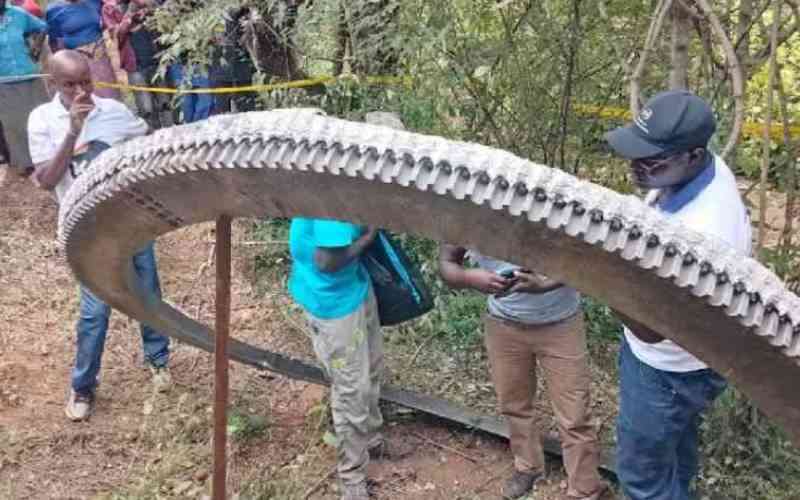 |
|
Descendants: Scientists have found 19 living relatives of Ötzi the Iceman who was found frozen in the Alps |
Scientists in Austria have found 19 living descendants of a prehistoric iceman whose 5,300-year-old body was found frozen in the Alps.
Researchers from the Institute of Legal Medicine at Innsbruck Medical University took DNA samples from blood donors in Tyrol in the west of the country.
They managed to match a particular genetic mutation with that of Ötzi, whose body was discovered back in 1991.
Experts now believe that the same mutation might also be found in the nearby rgions of Engadine in Switzerland and the South Tyrol region of Italy.
According to the BBC, Walther Parson from the university, said: 'We have already found Swiss and Italian partners so that we can pursue our research.'
DNA from around 3,700 blood donors were analysed and the men were also asked to provide information on their ancestry.
None of the donors have been informed that they are distantly related to Ötzi.
Since the body was found frozen under the Alps two decades ago, scientists have conducted experiments to learn how he came to be buried between the Austrian and Italian borders more than 5,300 years ago.
A hole in his collarbone suggested he was killed by an arrow, then a brain scan concluded he died from a fall.
But research earlier this year, from the European Academy of Bolzano/Bozen (EURAC) in Germany, discovered he suffered brain damage likely caused by a blow to the head.
In 2001, scientists from Austria's Innsbruck University scanned Ötzi using a CAT scan.
They found dark spots at the back of the iceman mummy's cerebrum and concluded he may have died from a head injury.
It was suggested that falling, after being hit by the arrow, or while climbing, may have caused this head injury.
The mummy was found in September 1991 in the Ötztal Alps, hence the name Ötzi, near the Similaun Mountain and Hauslabjoch on the border between Austria and Italy.
Scientists estimate he was aged around 45, was 5ft 5" tall and weighed about 7.9st when he died.
Stay informed. Subscribe to our newsletter
Ötzi is kept in a specially built museum in Bolzano, Italy. Visitors view the mummy through portholes into a specially refrigerated room.
The hunter was frozen with all his possessions including a bow, a quiver of arrows and a copper axe. He was wearing warm clothing including a cloak made of woven grass, a coat and leggings made from goatskin and a bearskin cap with a leather chin strap.
WHO WAS ÖTZI?
 |
|
DNA analysis has revealed details of the iceman's life |
The 5,300-year-old 'ice mummy' known as Ötzi suffered from the world's first-known case of Lyme disease, a bacterial parasite spread by ticks, according to new DNA analysis.
Ötzi, who was 46 at the time of his death and measured 5ft2, also had brown eyes, had relatives in Sardinia, and was lactose intolerant.
Ötzi was also predisposed to heart disease.
The new research focused on the DNA in the nuclei of Ötzi's cells, and could yield further insights into the famous 'ice mummy's life.
He was unearthed in September 1991 by a couple of German tourists trekking through the Oetz Valley, after which he was named.
He was about 46 years old when he met his death.
The iceman has been crucial to our understanding of how prehistoric people lived, what they wore and even what they ate.
Researchers examining the contents of his stomach worked out that his final meal consisted of venison and ibex meat.
Archaeologists believe Otzi, who was carrying a bow, a quiver of arrows and a copper axe, may have been a hunter or warrior killed in a skirmish with a rival tribe.
Researchers say he was about 159cm tall (5ft 2.5in), 46 years old, arthritic and infested with whipworm, an intestinal parasite.
His perfectly preserved body is stored in his own specially designed cold storage chamber at the South Tyrol Museum of Archaeology in Italy at a constant temperature of -6°C. Visitors can view the mummy through a small window.
Alongside his remains is a new Otzi model created using 3D images of the corpse and forensic technology by two Dutch artists – Alfons and Adrie Kennis.
Adapted from Daily Mail
 The Standard Group Plc is a
multi-media organization with investments in media platforms spanning newspaper
print operations, television, radio broadcasting, digital and online services. The
Standard Group is recognized as a leading multi-media house in Kenya with a key
influence in matters of national and international interest.
The Standard Group Plc is a
multi-media organization with investments in media platforms spanning newspaper
print operations, television, radio broadcasting, digital and online services. The
Standard Group is recognized as a leading multi-media house in Kenya with a key
influence in matters of national and international interest.
 The Standard Group Plc is a
multi-media organization with investments in media platforms spanning newspaper
print operations, television, radio broadcasting, digital and online services. The
Standard Group is recognized as a leading multi-media house in Kenya with a key
influence in matters of national and international interest.
The Standard Group Plc is a
multi-media organization with investments in media platforms spanning newspaper
print operations, television, radio broadcasting, digital and online services. The
Standard Group is recognized as a leading multi-media house in Kenya with a key
influence in matters of national and international interest.







